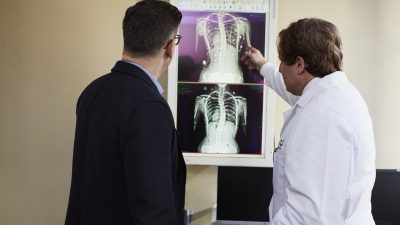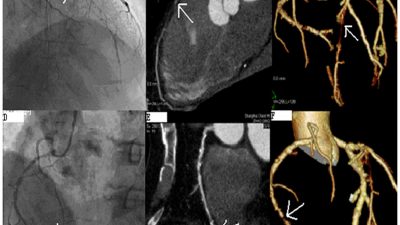In this edition of our Quality Matters blog, we take a speculative look at the future of quality in cardiology. What’s on the horizon, and what’s next for quality standards in the field?
In September, Accreditation for Cardiovascular Excellence announced the release of our newly updated, openly available 2020 quality standards for the cardiac catheterization laboratory. Last updated in 2015, ACE quality standards for cardiac catheterization and percutaneous coronary intervention have undergone a comprehensive review and update process led by the ACE Board of Directors, including review of all recent literature and guidance documents from professional societies, resulting in the first openly available ambulatory surgery center standards.
As we roll out changes, optimizations and new standards five years in the making, we’re inspired to take a look forward at the next five years. What will quality cardiac care look like in 2025? In 2030? We cut through the hype to examine four major trends shaping the future of quality in cardiology.
1. Structural Heart Standards Coming Soon
Okay, we don’t exactly have to break out our crystal ball for this one—we’ve been developing quality standards for structural heart and transcatheter aortic valve replacement (TAVR) procedures, specifically, and it will likely be the next major announcement from ACE following our Cath/PCI standards update. But as more new science confirms the efficacy and durability of TAVR results, more providers will move to offer TAVR procedures and volumes will increase, so these standards will be all the more important going forward.
During COVID-19, the Centers for Medicare & Medicaid Services (CMS) offered leniency on their volume requirements, so we may have even more evidence, borne of necessity and natural experiment, of the importance of volume requirements in maintaining procedural competency in the next few years. As with our updated Cath/PCI standards, ACE’s standards for structural heart will incorporate the latest science and clinical consensus to ensure quality care across an array of treatment facilities. Use the sign-up form in the sidebar of this page to receive emails from ACE and get notified when we release Structural Heart quality standards.

2. The Truth About Artificial Intelligence
While there has been much hype and fear about artificial intelligence (AI), particularly in sensationalized claims that AI will soon replace one specialty or another—like the “Rise of Robot Radiologists” in Nature—it is more helpful to understand the current and near-future iterations of big data AI as “Prediction Machines,” as outlined in a fantastic book by economists Ajay Agrawal, Joshua Gans and Avi Goldfarb.
Artificial intelligence applications might best be understood as productivity tools that help professionals make predictions more accurately and quickly—incredibly valuable tools in healthcare. Rather than automating away jobs, these productivity tools will likely increase the accessibility and value of top-level skillsets and allow doctors to focus on patients and where they can provide the most value and the highest quality care. Perhaps, even, staunching the flow of doctors from smaller practices to large health systems and giving doctors far more flexibility and choice to make the largest impact for their patients.
Take, for example, the proliferation of personal computers for business applications and the rise of spreadsheet software. Prior to this, many accountants were employed in largely clerical or computational roles in large companies that could afford large accounting departments. While many of these professionals may have been nervous about the advent of spreadsheet software making their jobs redundant, those individuals did not take into account what economists might have foresaw—that making computation easier or “cheaper” made their roles more accessible and more valuable in a wider range of smaller companies and even in middle class families’ homes. In the history of economics, we see this story play out again and again, from the early industrial revolution to the automatic teller machine.
Thinking of AI applications, especially in the next foreseeable 10-15 years, as productivity tools rather than job-threatening automatons allows us to illuminate further trends that new AI applications will accelerate—trends like personalized medicine and applying behavioral science to the future of quality in cardiology.
3. Personalized Medicine & Better Risk Stratification
Personalized medicine is sometimes discussed in the most speculative and spectacular terms, like developing drug cocktails for hyper-specific genetic makeups or even stratifying long-term risk and lifetime patient management on genetic biomarkers. How might these things apply in the here-and-now to a cardiac interventionalist?
Cardiologists concerned with providing high value, high quality care already understand the crucial significance of Appropriate Use Criteria and risk stratification, and increasing science in personalized medicine and genetic biomarkers will likely begin to shape those criteria in the next 5-10 years, especially as AI applications accelerate our understanding of personalized medicine and the production of new science in the field. It’s simply a matter of when.

4. Behavioral Care Design & Quality Improvement
Artificial intelligence as it has been deployed in other industries is largely aimed at one big picture task: predicting human behavior. If you bought product A, are you likely to buy product B? That’s a behavioral question. As AI applications make predicting patient behavior more accessible to clinicians, behavior will begin to shape both clinical decision-making and clinical delivery innovation. Combine this facilitative trend—making human behavior easier to predict, at least at scale—with the wider, stakeholder-led trend towards value-based care and payment models and population health models of care, and you have a great deal of impetus for harnessing behavioral design to improve care delivery and clinical decision-making.
Behavioral prediction may also be utilized at the provider level, in terms of quality improvement—how might a system’s doctors’ behavior be shaped towards higher quality care? Behavioral design teams might help. In “Behavioral Design Teams: The Next Frontier in Clinical Delivery Innovation?” an issue brief from the Commonwealth Fund, the authors do a far better and more comprehensive job of explaining how behavioral design might shape the future of quality in cardiology than I can in this short blog—I highly recommend taking the time to read it!
Accreditation for Cardiovascular Excellence uses a supportive and strengths-based approach to accreditation, quality assurance and quality review to avoid common behavioral pitfalls in punitive and overly prescriptive accreditation or certification services, so it’s a topic close to our mission and organizational goals. Will we be able to harness behavioral design to improve quality assurance and quality improvement, systemically, across the world? We hope so!












